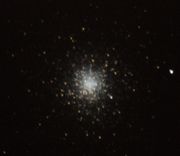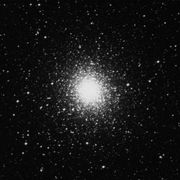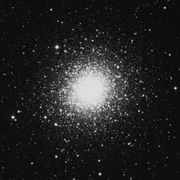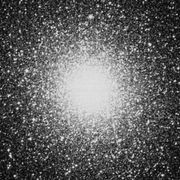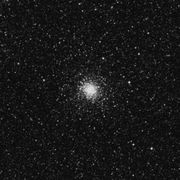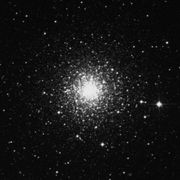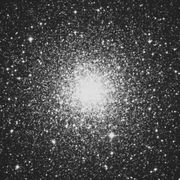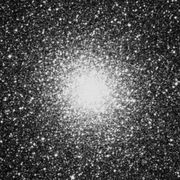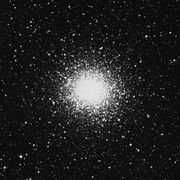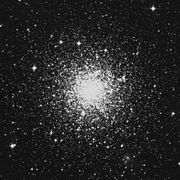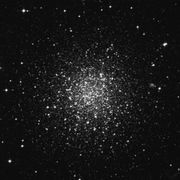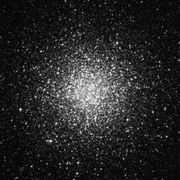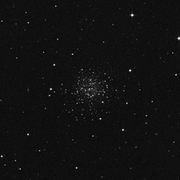Globular cluster
Globular star clusters are clusters that have a definite spherical shape, which is different from open clusters that tend to have no defined shape. Globular clusters also orbit outside of the main disk of our galaxy, forming a "halo" of globular clusters around the galactic nucleus. This allowed the American astronomer Harlow Shapley to use them to determine the direction and distance to the core of our galaxy[1]. Further, as open clusters tend to be groups of young stars, globular clusters tend to be groups of very old Population II stars[2]. This makes globular clusters a place to study older mature stars. In terms of size, globular clusters tend to range from about 20 to about 100 pc and contain tens of thousands of stars or more.
To the observer the appearance of globular clusters appears the same in general shape. What varies is the density of the stars. In binoculars or very small telescopes globular clusters appear as fuzzy disks. In larger telescopes individual stars can sometimes be made out, though this is usually only on the edges of the cluster. This variance in stellar density also means that though similar in shape, there is enough variation in globular clusters to make it worth while for an observer to hunt down more than just one.
Contents |
Classifying Globular Clusters
General Terms
Globulars can be described as densely packed or loose. Generally the looser a globular cluster, the easier it is to see and more spectacular it is, to a point. Too loose and the globular is harder to see so clusters of a "medium" density are best to look for.[3]
Shapley System
In 1927 the American astronomer Harlow Shapley along with the American born Canadian astronomer Helen Sawyer Hogg published an article on the classification of globular clusters. Their system classifies globular clusters on the concentration of stars along a 12 point scale using Roman numerals. Class I globulars being the most dense/concentrated towards the centre and Class XII the least. They then went on to provide a list of globular clusters and their classifications. The table below provides a list of 12 globular clusters Shapley and Hogg provided as representative of that particular class [4].
| Class | NGC | Messier | Image |
|---|---|---|---|
| I | 2808 | ||
| II | 7089 | 2 | |
| III | 104 | ||
| IV | 1866 | ||
| V | 7099 | 30 | |
| VI | 6752 | ||
| VII | 6656 | 22 | |
| VIII | 6402 | 14 | |
| IX | 6218 | ||
| X | 288 | ||
| XI | 6809 | 55 | |
| XII | 7492 |
References
- ↑ Abell, George, Exploration of the Universe, 4th ed.
- ↑ Freedman, Roger A and Kaufmann III, William J., Universe, 8th ed.
- ↑ Dickenson, Terrence and Dyer, Allen, The Backyard Astronomer's Guide, Rev. Ed.
- ↑ Shapley, Harlow and Sawyer, Helen, A Classification of Globular Clusters, Harvard College Observatory Bulletin, 1927 No. 849 pp 11-14
